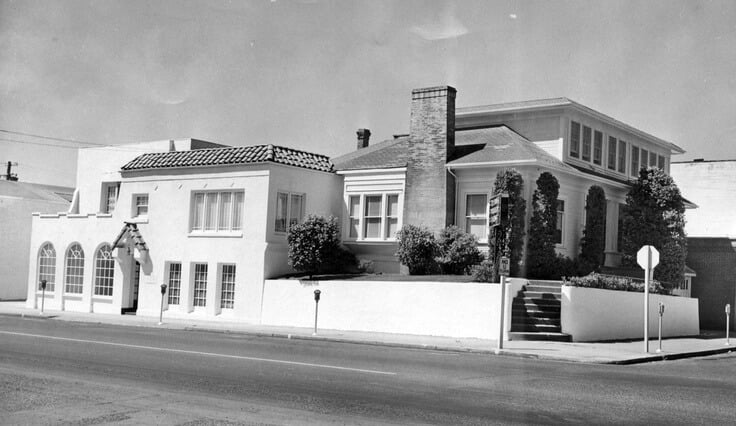Editor’s Note: This is the first of a series of articles about the history of the Camas Mill.
Camas, WA — The Camas Mill has undergone many name changes, renovations, additions, and has a history filled with fascinating stories dating back to the 1880s.
Longtime mill employees Anna Fry and Caroline Mercury (who recently retired after 36 years) spent considerable time gathering the history (artifacts, logs, books, photos, tools, etc.) and have created a Mill Interpretive Center, or museum, that gives visitors a comprehensive look at what turned Camas into a town, and why we’re called the Papermakers.
The Interpretive Center is open on First Fridays, near the mill’s main entrance on Adams Street (with the black canopy) and provides visitors with an excellent 10-minute movie that provides a light overview of the mill’s history, the people who built it — and those who continue to work there today.
Even if you’re not a history buff, spending 30 minutes at the center will open your eyes to its history — and it may even surprise you.
One of the first things Mercury presented was the mill handle pattern, which is made of wood. It served as a pattern for the 20,000+ steel handles manufactured throughout the mill over the generations.
“It was handcrafted with great precision,” said Mercury. “And we’ve preserved it here for history.”

This wooden gear served as the pattern for more than 20,000 steel handles that operated at the Camas Mill.
She said the mill sits on 650 acres, of which 200 acres is on the main land, 425 acres is on Lady Island, and 17 acres is north of 6th Avenue.
They happily showed off manager book reports dating back to the 1920s, detailing every expenditure, including the cost of meals. They pulled out dozens of photos dating back to the first mill, which burned down. We looked at photos of the brand-new manager’s house, which was built in 1923 and still stands today on 6th Avenue and Garfield. They shared stories like when the mill was converted into a machine shop to make ship parts during World War II.
”We built rudders and great cleats,” said Fry. “Those (the cleats) are the things that hold the ship at the dock.”
During the Depression, said Mercury, they never laid anyone off, and kept people working part-time.
”The mill made sure that families had milk and bread during those lean years,” said Mercury.
And, did you know that currently the mill produces 50,000 tons of paper a year?
Key Historical Points
The mill’s history dates back to 1883 when Henry Pittock, who owned The Oregonian newspaper, formed a company called the Lacamas Colony Company. Under Pittock’s leadership, the business purchased 2,600 acres of land and began construction of a paper mill that would supply newsprint for The Oregonian. The purchased land included property north of Lacamas Lake.
Crews began clearing land, building dams, and constructing a saw mill. Thirty Chinese laborers began work on the mill ditch, which is an aqueduct that continues to supply the Camas Mill with water today. During that same year, the town site of Lacamas was laid out and platted, and the town’s first store was opened for business.
- In 1884, Pittock, J.K. Gill, and William Lewthwaite formed the Columbia River Paper Company and filed letters of incorporation in the county clerk’s office.
- In 1885, the plant produced the first wood pulp manufactured in the northwest, and it was reported to be of excellent quality.
- On November 6, 1886, a fire destroyed the original facility, with damages estimated at $100,000. The cause of the fire was never determined.
- By 1888, the plant was rebuilt to include two paper machines, a ground wood mill, a sulfite mill with two digesters, and a sulfur burner. The plant employed 65 people.
- In 1889, Washington became a state, and in 1904, the No. 4 paper machine started making newsprint.
- In 1906, the bag factory was built, and was equipped with 14 machines. Camas would make bags until 1981.
- In 1907, sulfite production increased from 10 to 38 tons per day. The steam plant was expanded, and the No. 5 paper machine started up.
- In 1910, The Crown Columbia Paper Company double the plant’s capacity, producing four million pounds per year.
- In 1911, with seven paper machines in operation, they employed 450 people and paid out $300,000 per year in wages.
- In 1913, the mill converted to electric power, the No. 8 paper machine was installed, and 16 new bag machines were added, which would produce 500,000 bags per day.
- In 1914, Crown Columbia merged with Willamette Paper to form Crown Willamette, which became the second largest paper maker in the world.
The next article will look at growth in the 20s, 30s, 40s and 50s, and the numerous changes that ensued.
- Hard at work.
- The original mill plant.
- The Mill Manager’s house, right after it was built in 1923. The house came with the job.
- Mill manager’s log.














